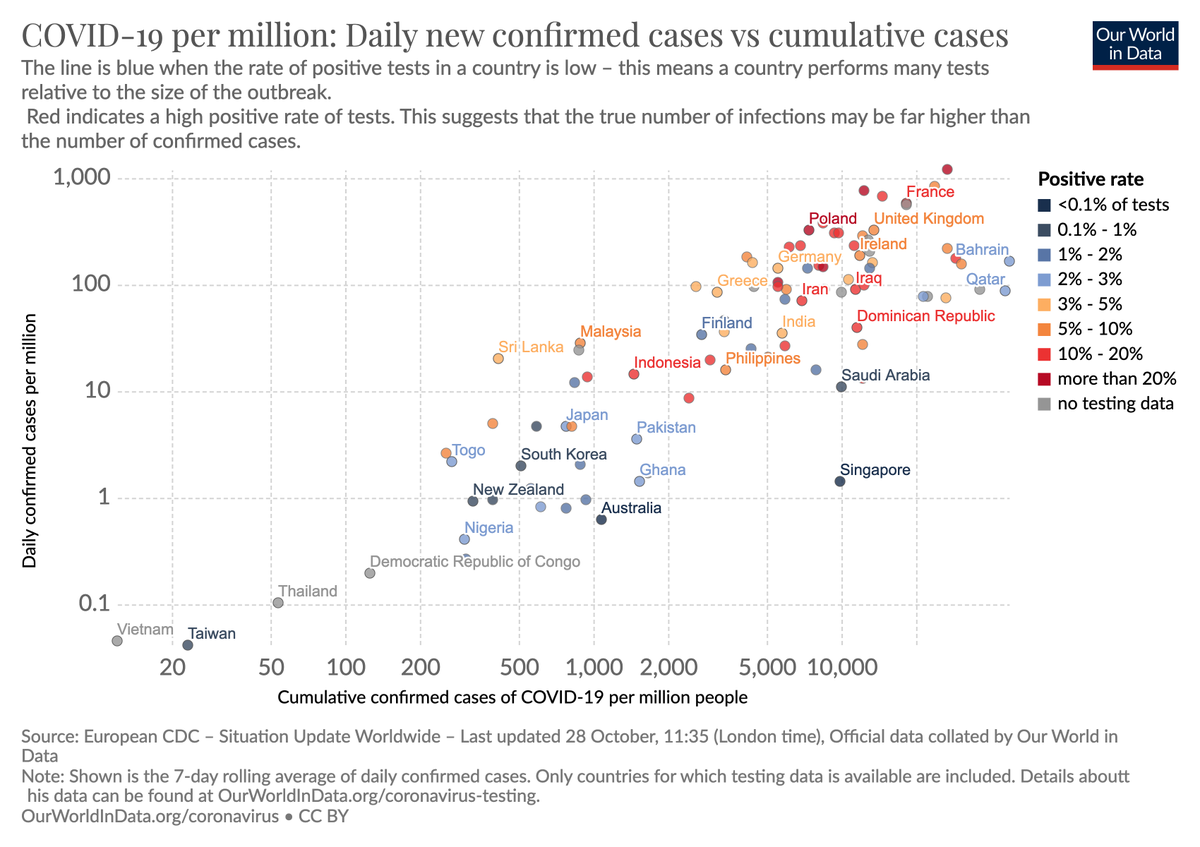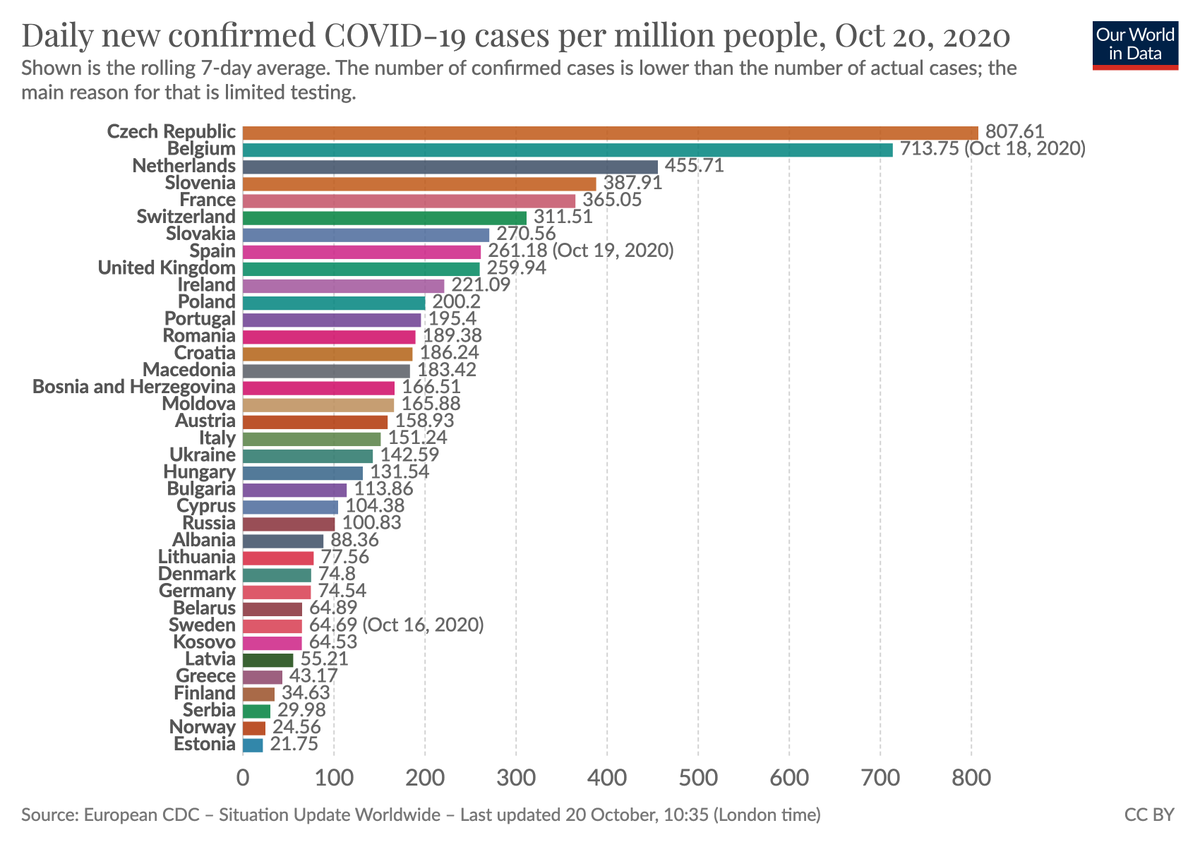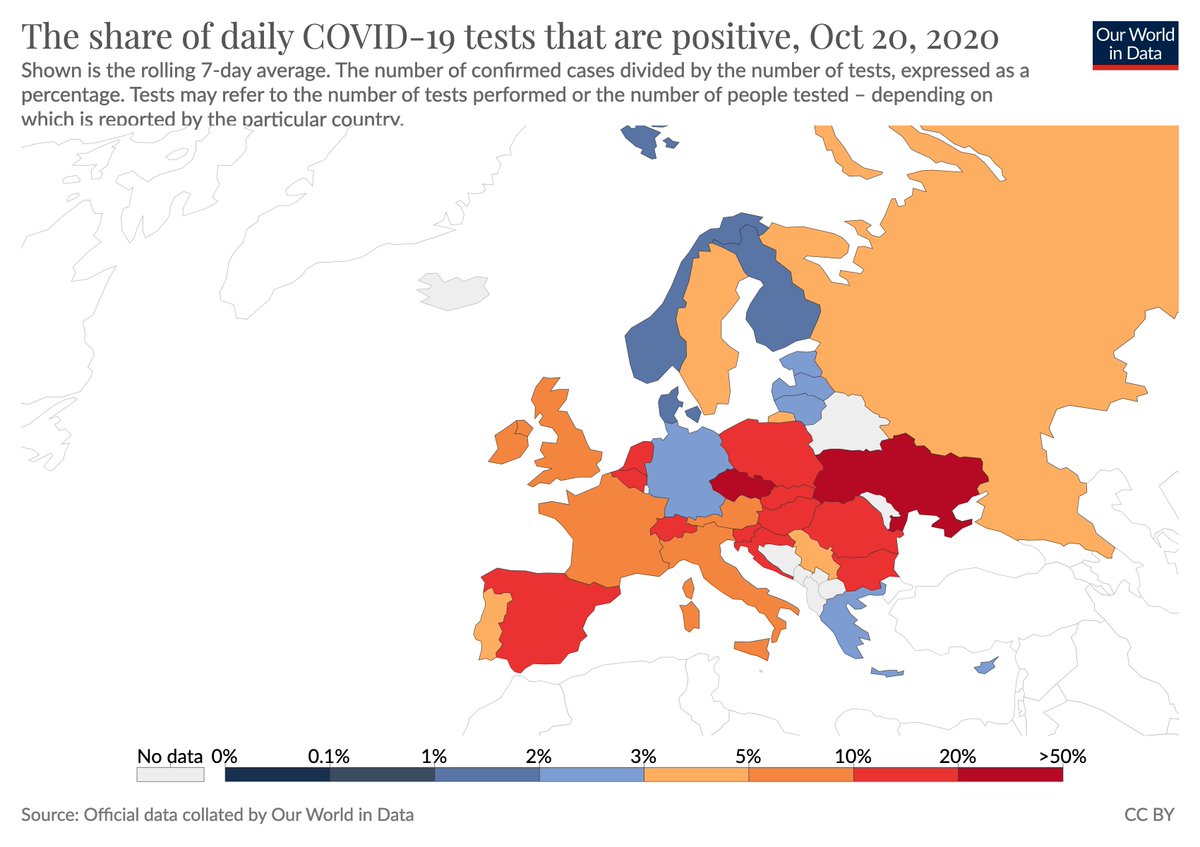
Predictions of the herd immunity theorists were wrong, @tylercowen rightly points out
marginalrevolution.com/marginalrevolu…
marginalrevolution.com/marginalrevolu…
If a country had actually achieved herd immunity you would find it in the bottom right corner of this chart.
The country would have a high cumulative case rate and a low current case rate.
[→ interactive chart ourworldindata.org/grapher/immuni…]
The country would have a high cumulative case rate and a low current case rate.
[→ interactive chart ourworldindata.org/grapher/immuni…]

Several people are asking, where is Sweden? It is in the top right corner.
Sweden is among those countries with the highest case rate up to now.
And Sweden is among those countries with the highest case rate right now.
Sweden is among those countries with the highest case rate up to now.
And Sweden is among those countries with the highest case rate right now.

At some point we will reach herd immunity – hopefully with the help of a vaccine –, but it should now be obvious that the loud claims of herd immunity advocates over the last months were wrong (and that they are partly responsible for the mess we are now in).
• • •
Missing some Tweet in this thread? You can try to
force a refresh











